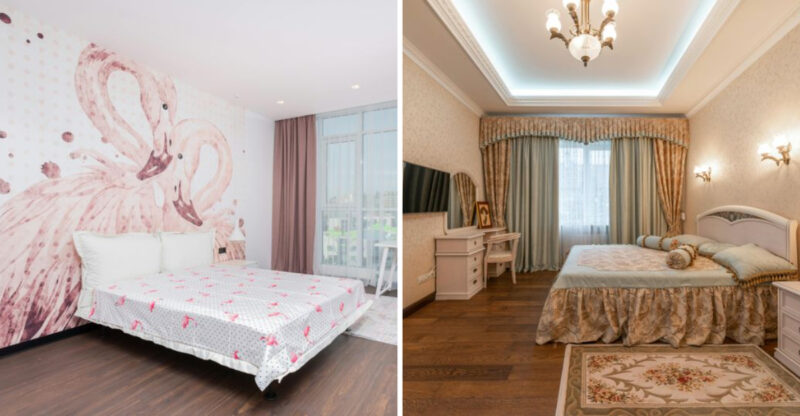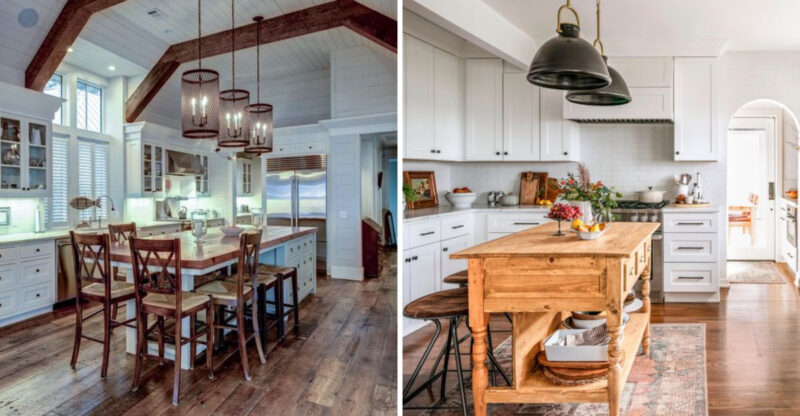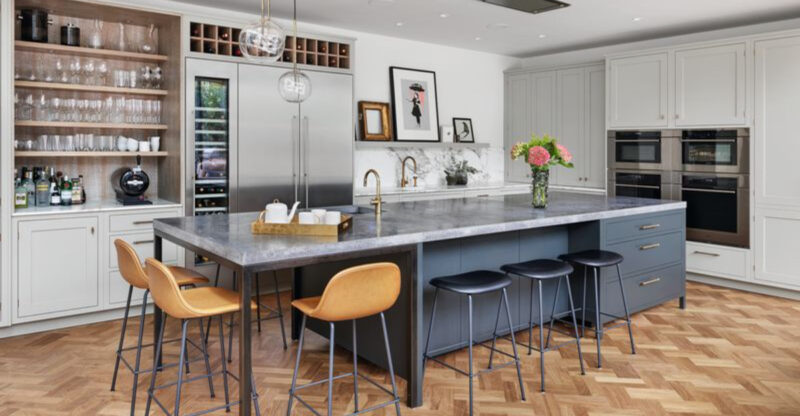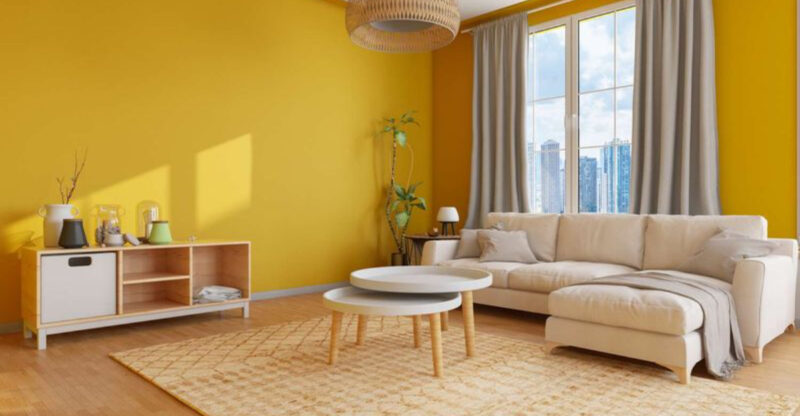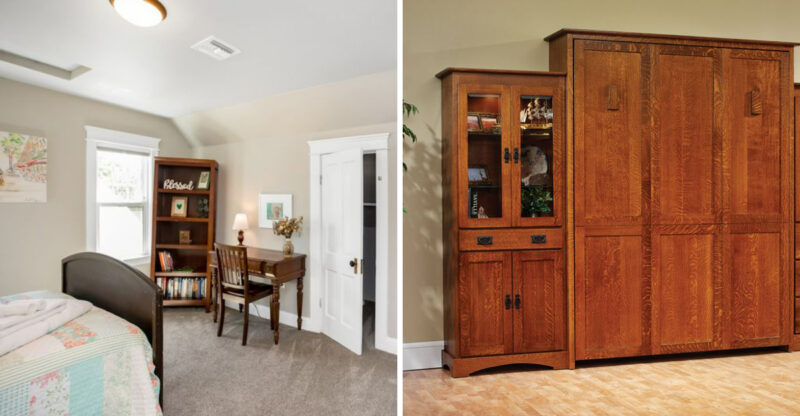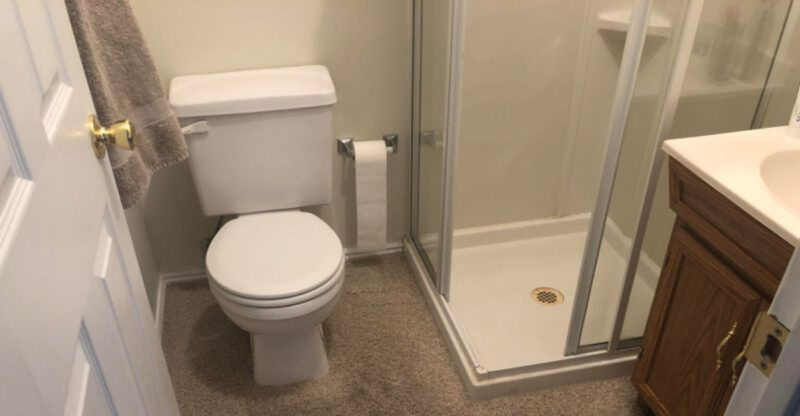13 Dramatic Paint Colors That’ll Bring Your Home To Life
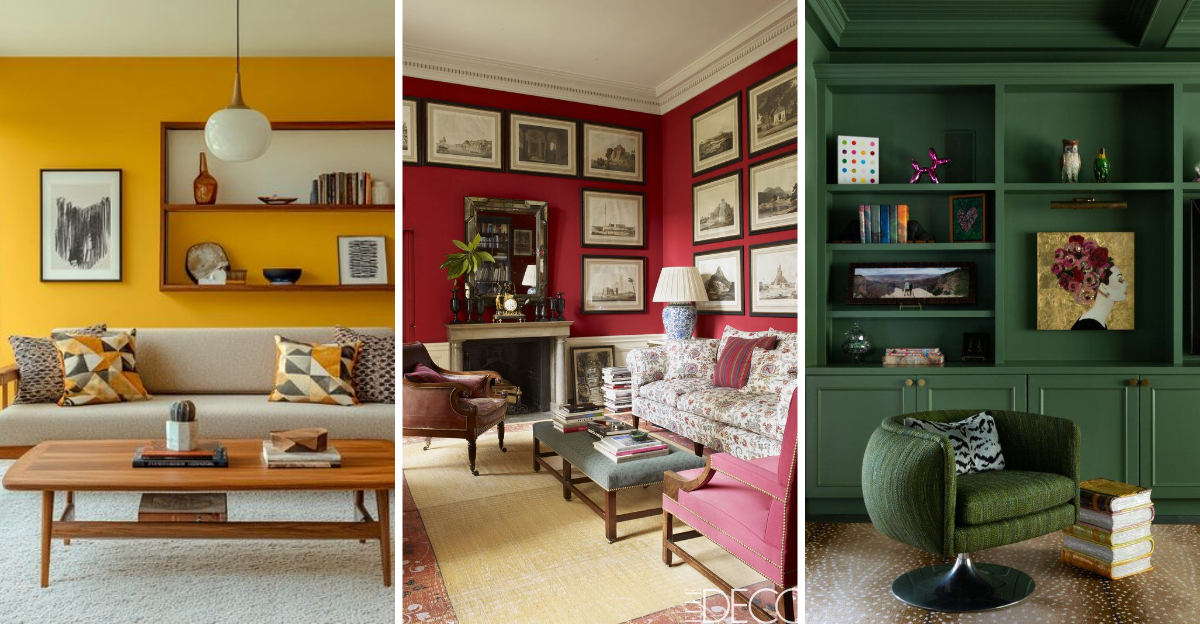
Sick of staring at plain white walls? It’s time to bring your space to life with color that speaks volumes.
A bold coat of paint can completely transform a room adding depth, mood, and unforgettable personality in just a few brushstrokes.
Whether you’re craving cozy drama or modern edge, the right shade makes all the difference. Ready to turn heads (and walls)? Here are 13 dramatic paint colors that will instantly elevate your home.
1. Deep Emerald Green
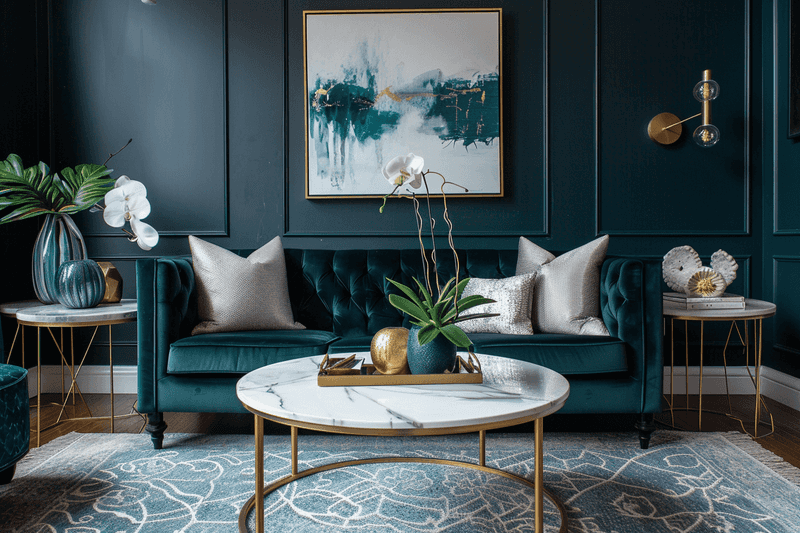
Royalty and luxury come alive with deep emerald green on your walls. This rich jewel tone creates an atmosphere of opulence while maintaining a surprising versatility in different lighting conditions.
I’ve seen emerald transform ordinary dining rooms into sophisticated entertaining spaces. The color pairs beautifully with gold accents, creating a timeless elegance that never goes out of style.
For those worried about going too dark, try using emerald as an accent wall in your living room or bedroom. The depth of this green brings a sense of nature indoors while adding dramatic flair that makes furniture and artwork pop against its lush backdrop.
2. Charcoal Black
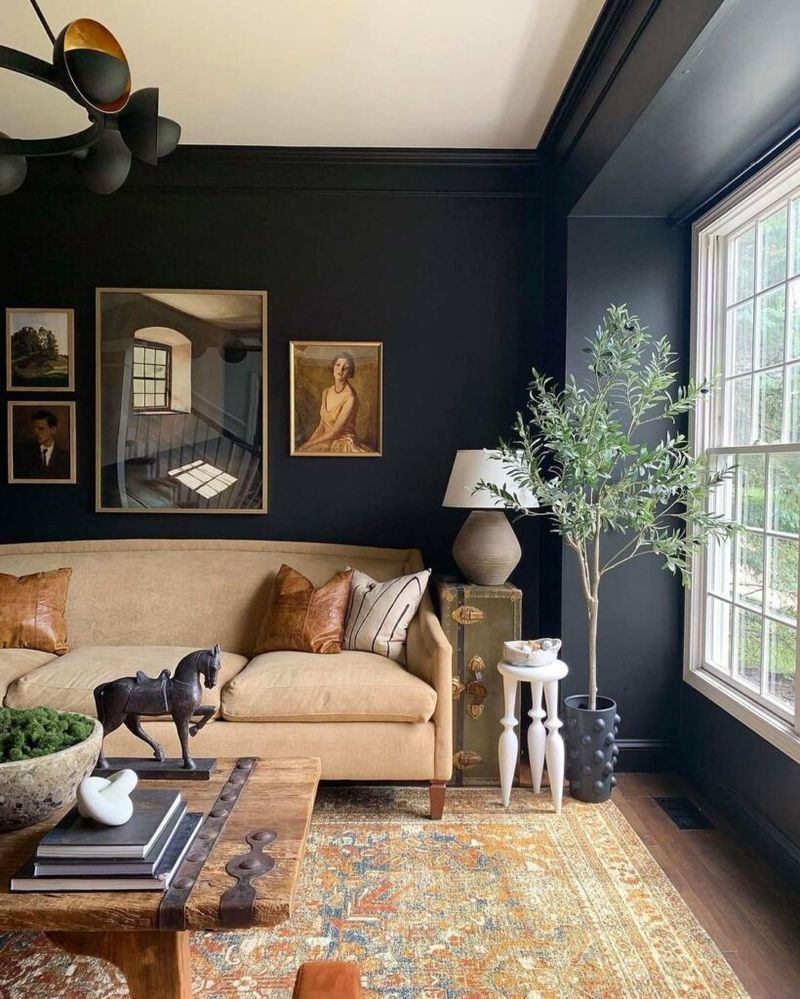
Contrary to popular belief, charcoal black doesn’t make spaces feel smaller – it makes them more intimate and sophisticated. This dramatic neutral creates a perfect backdrop for artwork and colorful furniture pieces.
When I painted my home office charcoal, the space immediately felt more focused and professional. The dark walls make white trim and ceiling details stand out dramatically, creating architectural interest even in basic rooms.
Try charcoal in spaces where you want to create mood – media rooms, dining areas, or powder rooms. The color absorbs light rather than reflecting it, creating a cocooning effect that feels both modern and timeless. Pair with metallic accents for a truly stunning contrast.
3. Cobalt Blue
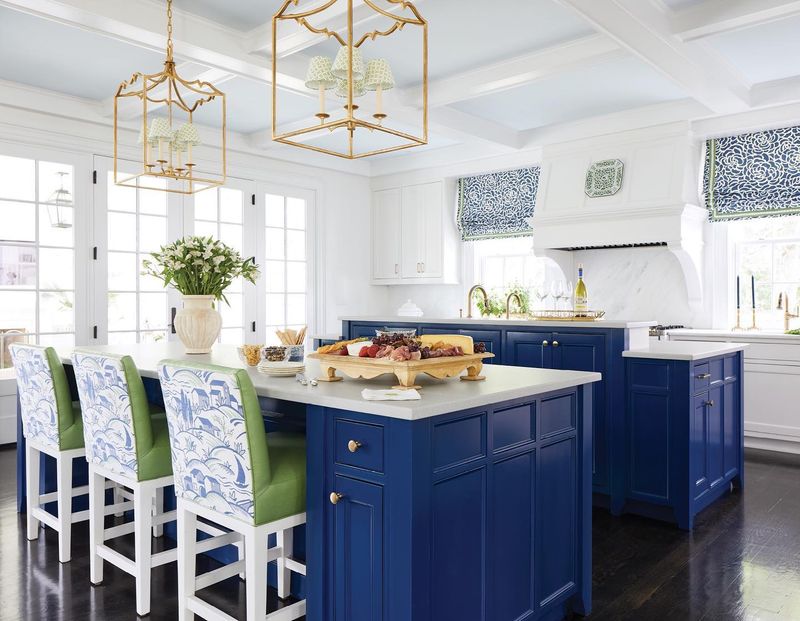
Electric and energizing, cobalt blue demands attention in any room. This vibrant hue sits between royal blue and navy, offering a perfect balance of drama and sophistication that works in both traditional and contemporary spaces.
My friend painted her kitchen island cobalt and it became the instant focal point of her open-concept home. The color’s intensity means a little goes a long way consider using it on a single wall, built-in shelving, or furniture pieces.
Cobalt particularly shines in rooms with plenty of natural light where its true depth can be appreciated. It pairs beautifully with crisp whites for a Mediterranean feel or with warm woods and brass fixtures for a more eclectic look that feels collected over time.
4. Burnt Sienna
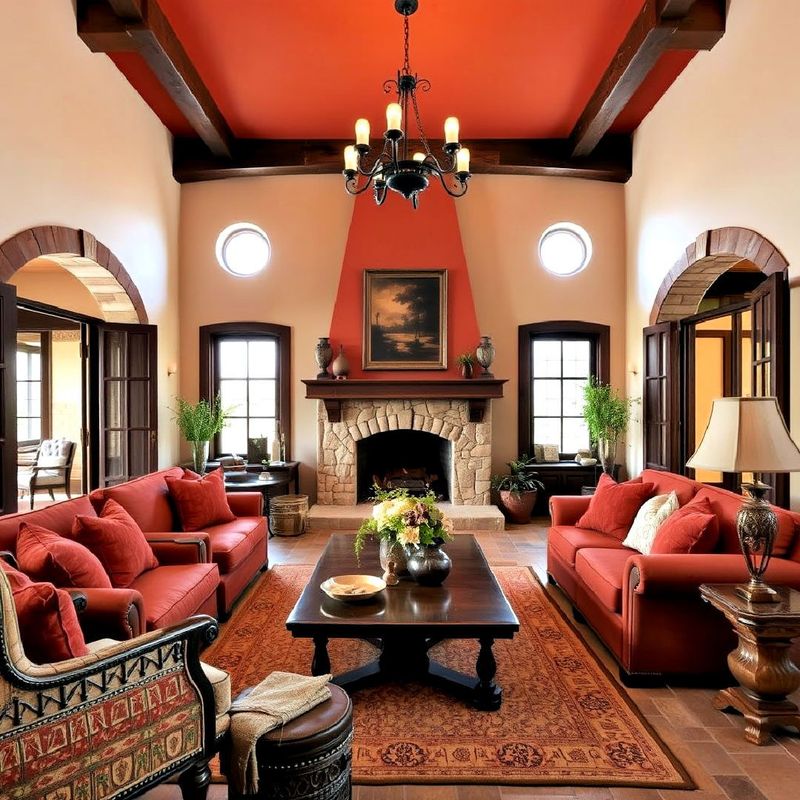
Warmth radiates from burnt sienna walls, creating spaces that feel instantly welcoming and grounded. This earthy terracotta shade has subtle red and brown undertones that shift beautifully as light changes throughout the day.
Houses with burnt sienna accents always remind me of Tuscan villas and desert retreats. The color has a natural quality that connects indoor spaces to the outdoors, making it perfect for living rooms and entryways.
If you’re hesitant about using such a bold shade, start small with a reading nook or dining area. Burnt sienna creates a beautiful backdrop for plants, natural textiles, and wooden furniture. The color’s earthiness makes it surprisingly versatile and timeless despite its richness and intensity.
5. Aubergine Purple
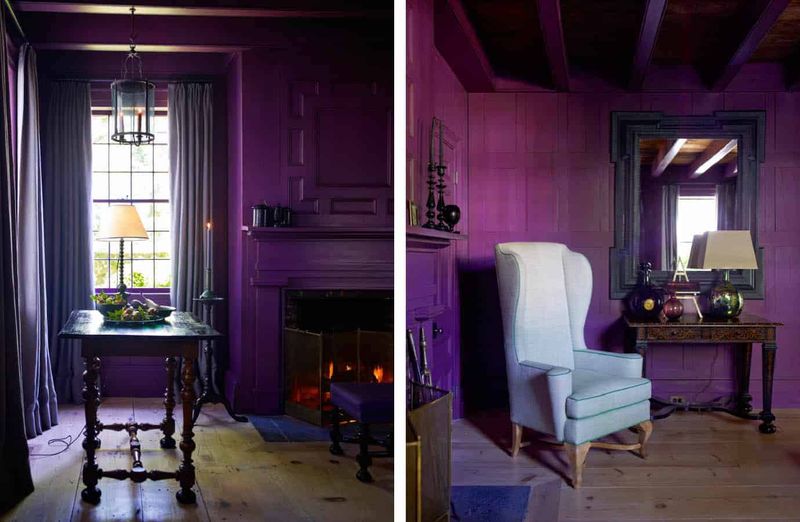
Mysterious and sophisticated, aubergine purple brings unexpected depth to any space. This deep eggplant shade manages to be both dramatic and surprisingly neutral, working as a beautiful backdrop for various decorating styles.
I’ve used aubergine in a client’s dining room, and dinner guests consistently commented on how the color made the space feel special and intimate. The purple undertones create a sense of luxury without being overly feminine or trendy.
Are you looking for a color that changes throughout the day? Aubergine shifts from almost-black in low light to a rich purple when sunlight hits it. This chameleon-like quality makes it perfect for bedrooms, libraries, or any space where you want to create a sense of drama and sophistication without going completely dark.
6. Crimson Red
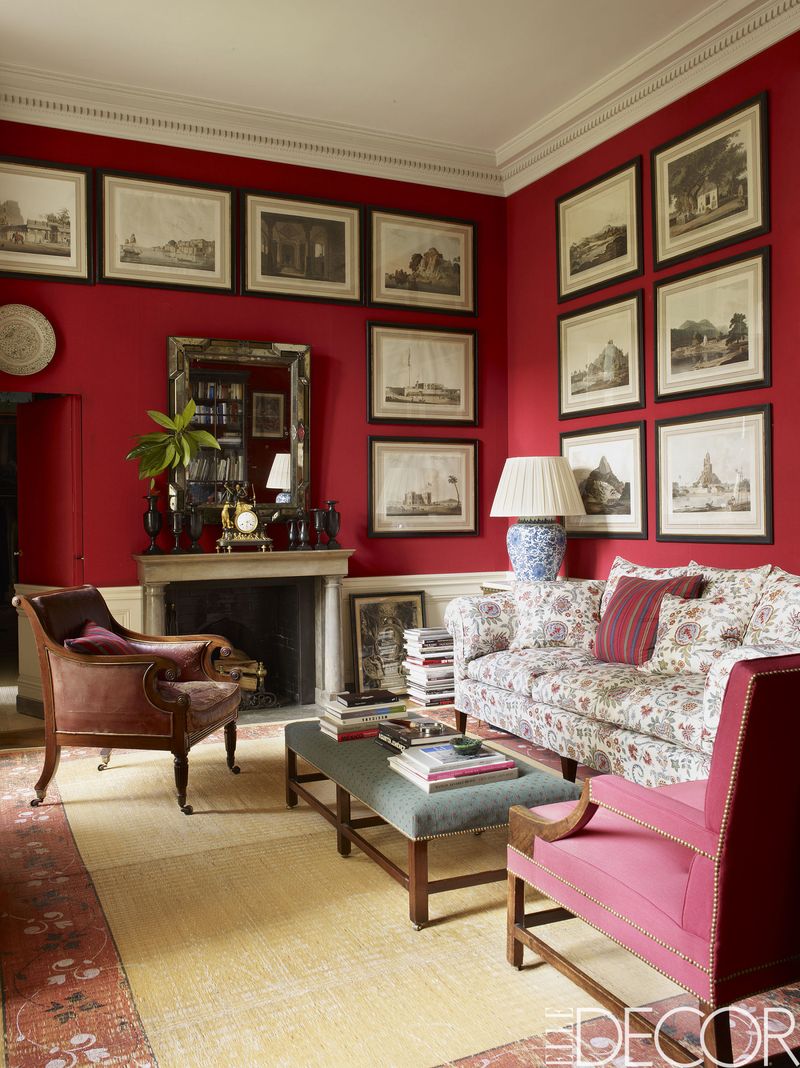
Bold and unapologetic, crimson red makes an immediate statement in any room. This classic color stimulates conversation and appetite, making it particularly effective in dining rooms and social spaces.
When my sister painted her small powder room crimson, the tiny space went from forgettable to unforgettable. The rich color created depth and interest where there was none before.
Crimson works best when balanced with neutral elements – think white trim, natural wood tones, or black accents. The color’s intensity means you don’t need much to make an impact – a single accent wall can transform an entire room. For those who love drama but fear commitment, crimson accessories against a neutral background offer a similar energy without the permanence.
7. Midnight Navy
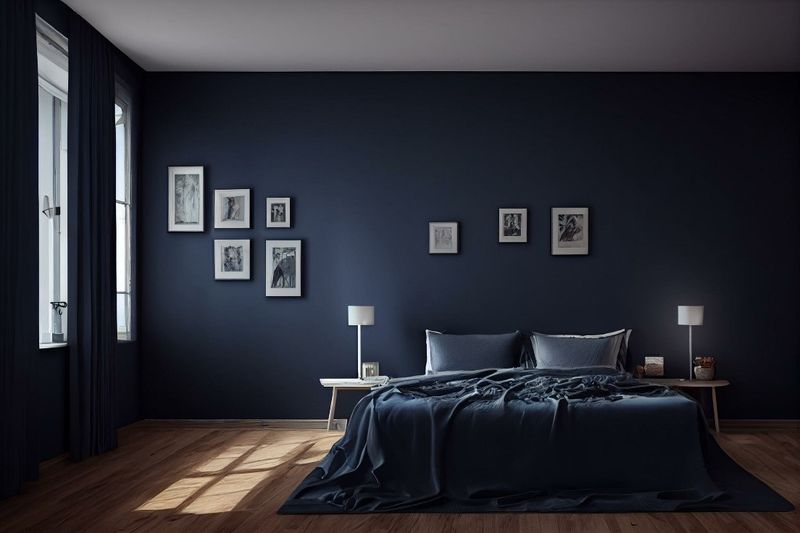
Sophistication meets versatility with midnight navy, the perfect alternative to black for those seeking depth without harshness. This deep blue creates a sense of calm while adding serious drama to any space.
My bedroom walls are midnight navy, and I’ve found it creates the perfect sleep sanctuary – cocooning at night while still looking crisp and tailored during the day. The color has an almost magical quality of making small rooms feel larger by blurring the boundaries of walls.
If you’re considering this shade, pair it with warm metals like brass or gold for a luxurious look. White trim creates beautiful contrast, while wood tones add warmth. Midnight navy works in any room but particularly shines in bedrooms, studies, and dining spaces where its moody elegance can be fully appreciated.
8. Terracotta Clay

Sunbaked warmth emanates from terracotta clay walls, bringing Mediterranean and Southwestern vibes to any space. This earthy orange-brown instantly creates a lived-in, collected feeling that newer homes often lack.
Homes with terracotta always remind me of travel and distant places. The color has a way of making everything placed against it look more expensive and intentional – from simple white pottery to vibrant textiles.
Though bold, terracotta is surprisingly versatile, working beautifully with blues, greens, and neutrals. The color shines in living areas, kitchens, and outdoor spaces where its warmth can be fully appreciated. For a modern take, pair terracotta with crisp whites and black accents rather than the traditional yellows and greens often associated with this earthy hue.
9. Olive Drab
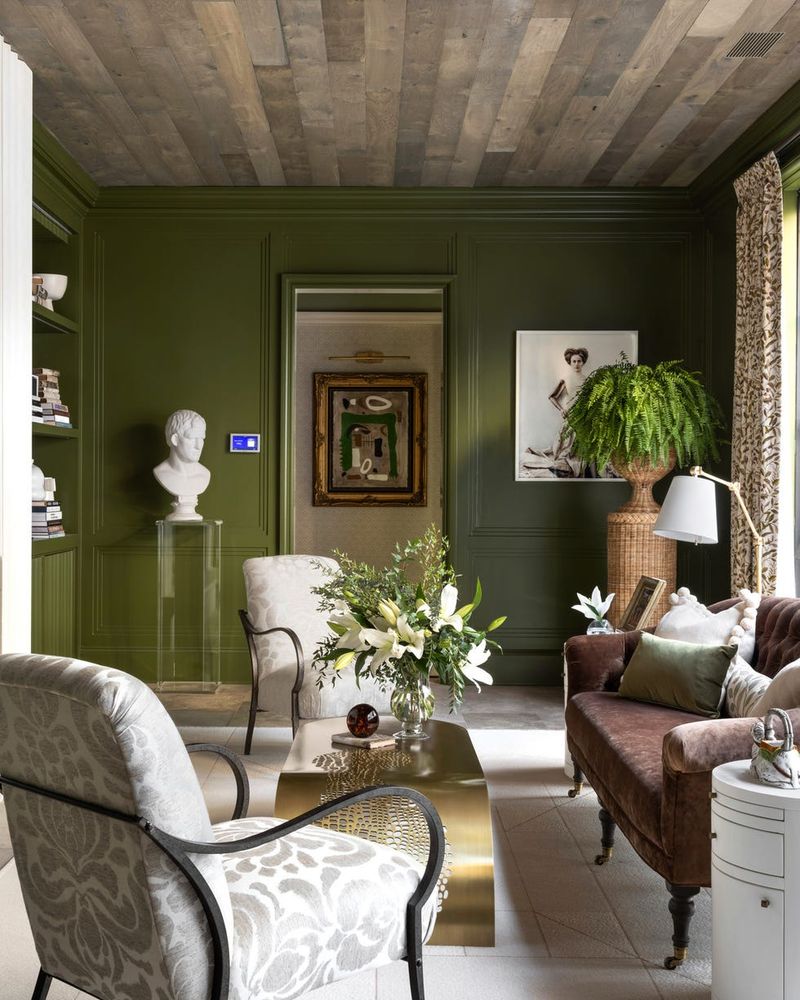
Military-inspired olive drab brings unexpected sophistication to contemporary spaces. This muted green has complex undertones that shift between gray, brown, and green depending on the light, creating depth that flat paints can’t match.
Did you know olive drab was originally developed to blend with natural environments? This heritage makes it perfect for creating spaces that feel connected to nature without using bright colors.
The versatility of olive drab surprised me when I used it in my sunroom. It pairs beautifully with both warm and cool accents, making it easy to incorporate into existing color schemes. The color feels especially appropriate in studies, bedrooms, and living spaces where its calming properties and natural associations create a grounded, peaceful atmosphere that still maintains visual interest.
10. Mustard Yellow
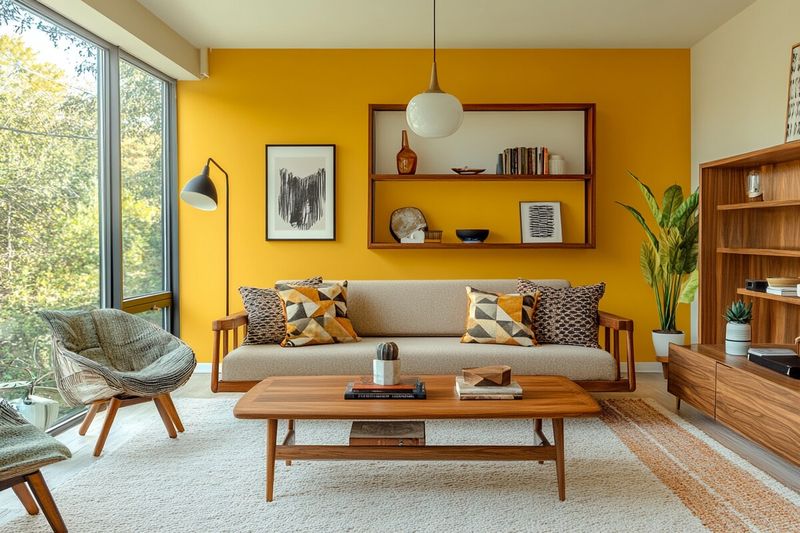
Energy and optimism radiate from mustard yellow walls, instantly warming spaces regardless of natural light conditions. This spicy, golden hue manages to feel both vintage and completely current at the same time.
I painted my north-facing office mustard yellow, and the transformation was remarkable. Even on gray days, the space feels sunny and invigorating – like working in perpetual golden hour light.
Mustard particularly excels in rooms that need warmth – dining rooms, kitchens, and living spaces. The color plays well with mid-century modern furniture, navy blues, and natural elements like wood and leather. For those hesitant about full mustard walls, try using it on a ceiling or inside bookshelves for a surprising pop of color that adds character without overwhelming.
11. Moody Teal

Depth and mystery define moody teal, a sophisticated blue-green that creates instant atmosphere in any space. This jewel tone has enough gray to keep it from feeling tropical, landing instead in the territory of elegant and timeless.
My friend’s teal dining room completely transforms when she hosts dinner parties. During daylight, the walls appear more blue, but by candlelight, the green undertones emerge, creating a chameleon-like backdrop that’s always interesting.
Where should you use teal? Consider spaces where you entertain or spend evening hours – dining rooms, libraries, or bedrooms. The color pairs beautifully with brass, walnut, and crisp whites. For a dramatic effect, take teal all the way to the ceiling and trim, creating an enveloping jewel box effect that feels both luxurious and cozy.
12. Rich Plum
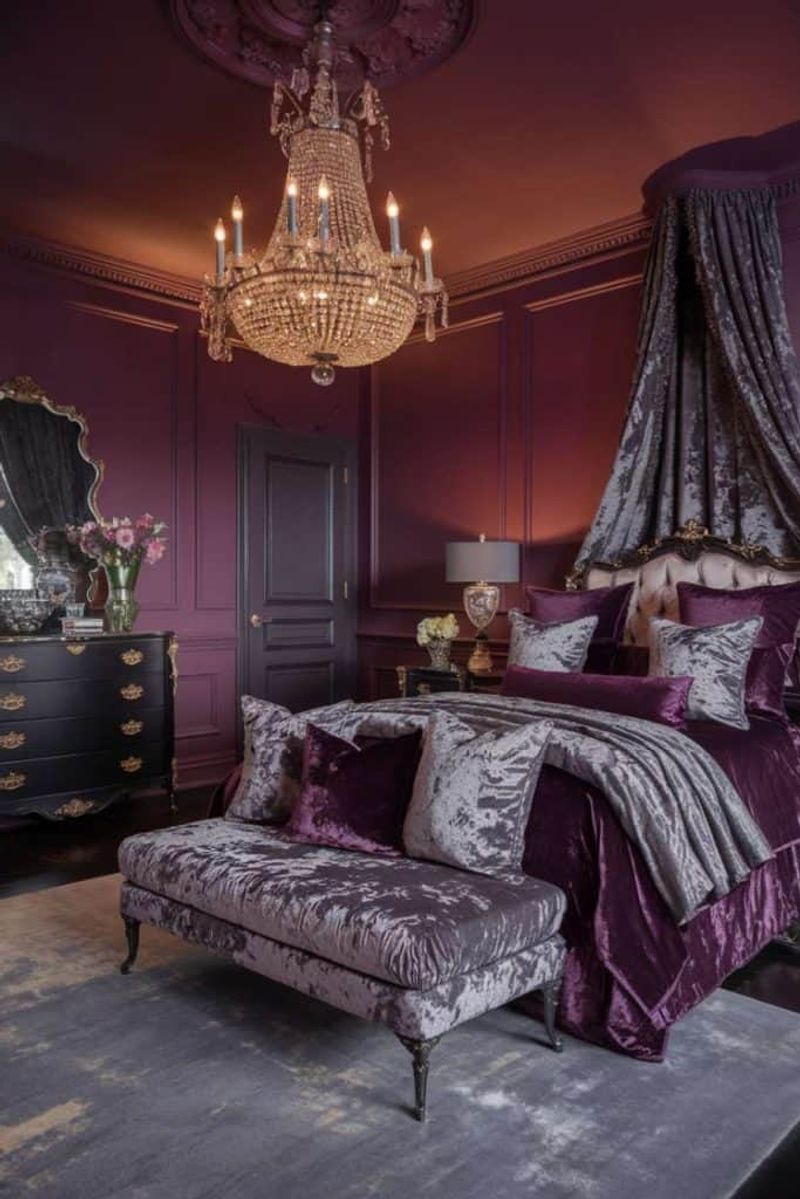
Luxury and drama define rich plum walls, creating spaces that feel both regal and intimate. This deep purple has enough brown undertones to keep it sophisticated rather than youthful or trendy.
When I used plum in a client’s master bedroom, the transformation was immediate – from ordinary to extraordinary. The color creates a beautiful backdrop for artwork, making colors pop while simultaneously setting a restful mood.
Plum works beautifully in spaces where you want to create atmosphere – bedrooms, dining rooms, and powder rooms. The color pairs naturally with gold accents, crisp whites, and gray tones. For those concerned about going too dark, consider using plum as an accent wall or in a room with abundant natural light where its rich complexity can truly be appreciated.
13. Forest Green
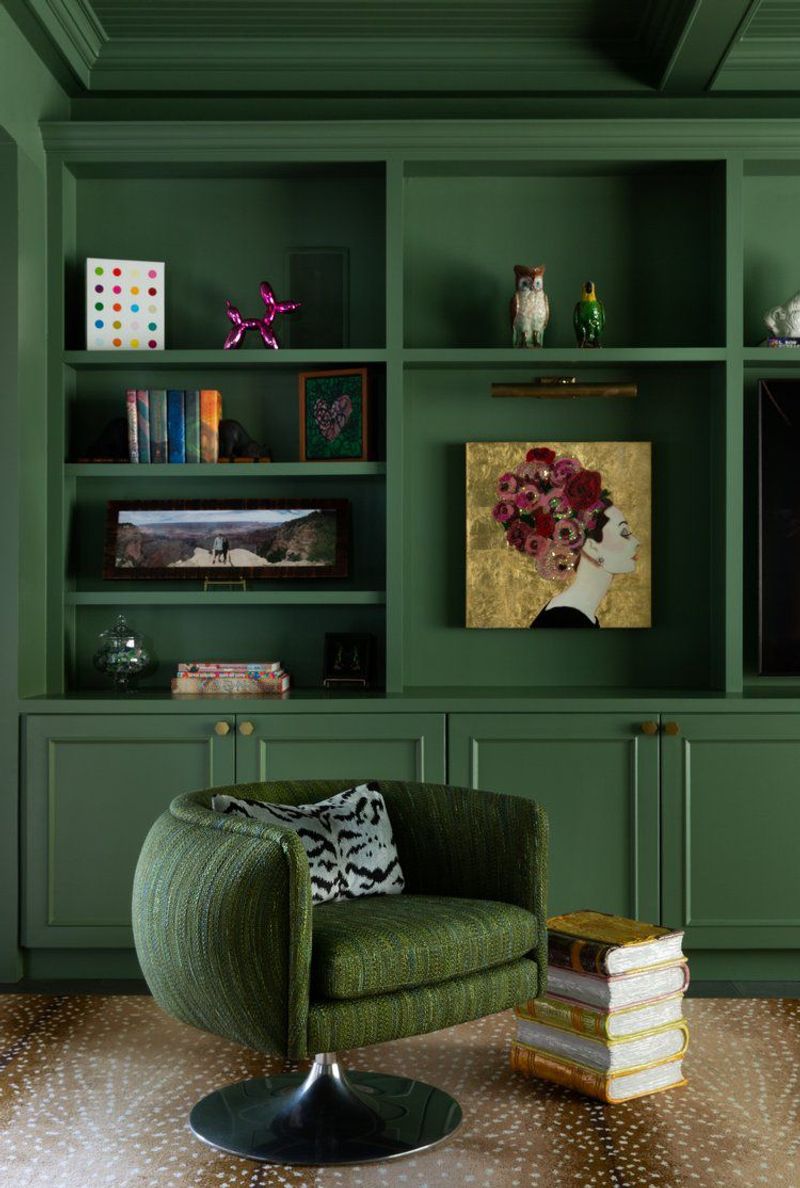
Nature’s neutral comes indoors with forest green, a timeless color that manages to be both dramatic and completely livable. This deep, saturated green creates spaces that feel simultaneously cozy and expansive.
Libraries and studies painted forest green always remind me of historic homes and private clubs spaces designed for comfort and conversation. The color has a way of making bookshelves recede while making their contents pop.
Though traditional, forest green feels surprisingly fresh in contemporary settings. It pairs beautifully with leather furniture, brass accents, and natural wood tones. The color works particularly well in rooms where you gather – living rooms, dining spaces, and studies. For maximum impact, consider painting both walls and trim in the same forest green for a modern, enveloping effect.

